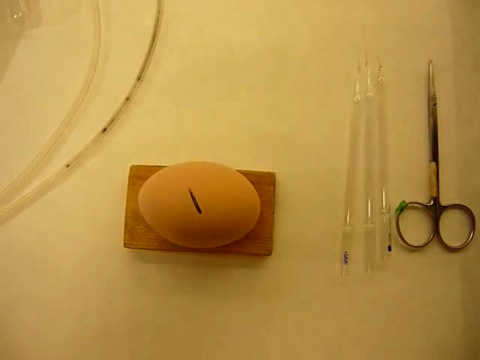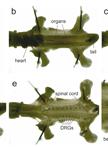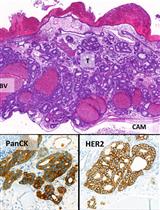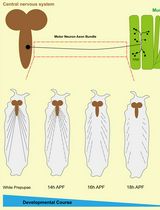- EN - English
- CN - 中文
Implantation of Dkk-1-soaked Beads into the Neural Tube of Chicken Embryos
移植Dkk-1浸润磁珠到鸡胚神经管
发布: 2013年11月05日第3卷第21期 DOI: 10.21769/BioProtoc.963 浏览次数: 12997
评审: Xuecai Ge
Abstract
Chick embryos are known to be a powerful system to test gene function due to the “in vivo” accessibility, short time for results retrieval and the possibility to perform a large number of experiments. Synthetic micro-beads soaked in morphogenetic signals or receptor inhibitors can be implanted in selective embryo regions at precise developmental stages activating or blocking different signaling pathways. Here, we describe the manipulation of Wnt signaling pathway using Dkk-1-soaked micro-beads, implanted in ovo in the anterior part of the developing neural tube of chicken embryos; specifically at the prospective zona limitans intrathalamica at stage HH10.
Keywords: Experimental embryology (实验胚胎学)Materials and Reagents
- Fertilized chick (Gallus gallus)
- Recombinant mouse Dkk-1 (R&D Systems, catalog number: 1765-DK )
- Heparin Acrylic beads (Sigma-Aldrich, catalog number: H5263 )
- Bovine Serum Albumine (BSA) (Sigma-Aldrich, catalog number: A2153 )
- Pelikan Drawing Ink Black
- Silikon Peroxid (IDEX Health & Science, catalog number: SC0083ST )
- Tungsten wire (0.380 mm, 10 FT) (World Precision Instruments, catalog number: TGW1510 )
- Grid with concentric circles (NE42-21 mm) (Graticules LTD, Tonbridge Kent)
- Penicillin-Streptomycin (10,000 U/ml) (Gibco, catalog number: 15140-122 )
- NaCl (Sigma-Aldrich, catalog number: S-3014 )
- KCl (Sigma-Aldrich, catalog number: P-9541 )
- CaCl2.2H2O (Prolabo, catalog number: 22317297 )
- NaH2PO4.2H2O (Scharlab, catalog number: SO0334 )
- MgCl2.6H2O (Prolabo, catalog number: 27778293 )
- D(+) glucose anhydre (Prolabo, catalog number: 24370294 )
- 10x Phosphate-buffer saline (PBS) (see Recipes)
- 4% Paraformaldehyde (PFA) from 20% PFA (see Recipes)
- PBS/0.1% BSA (see Recipes)
- Tyrodes buffer (see Recipes)
- 0.5% Bicarbonate (see Recipes)
- 0.5% Glucose (see Recipes)
- Tyrodes supplemented (see Recipes)
Equipment
- 37 °C, 5% CO2 forced-air incubator (Novital, model: Covatutto 120-4V )
- Dissecting microscope (Leica Microsystems, model: MS5 )
- Butane burner (Butsir)
- Glass micropipet (homemade)
- Pasteur pipets (Deltalab, catalog number: 200001 )
- Silicon tube (IDEX Health & Science, catalog number: SC0083ST )
Procedure
文章信息
版权信息
© 2013 The Authors; exclusive licensee Bio-protocol LLC.
如何引用
Readers should cite both the Bio-protocol article and the original research article where this protocol was used:
- Martinez-Ferre, A., Navarro-Garberí, M., Bueno, C. and Martinez, S. (2013). Implantation of Dkk-1-soaked Beads into the Neural Tube of Chicken Embryos. Bio-protocol 3(21): e963. DOI: 10.21769/BioProtoc.963.
- Martinez-Ferre, A., Navarro-Garberi, M., Bueno, C. and Martinez, S. (2013). Wnt signal specifies the intrathalamic limit and its organizer properties by regulating Shh induction in the alar plate. J Neurosci 33(9): 3967-3980.
分类
神经科学 > 发育 > 神经元
发育生物学 > 形态建成
细胞生物学 > 组织分析 > 组织染色
您对这篇实验方法有问题吗?
在此处发布您的问题,我们将邀请本文作者来回答。同时,我们会将您的问题发布到Bio-protocol Exchange,以便寻求社区成员的帮助。
Share
Bluesky
X
Copy link












